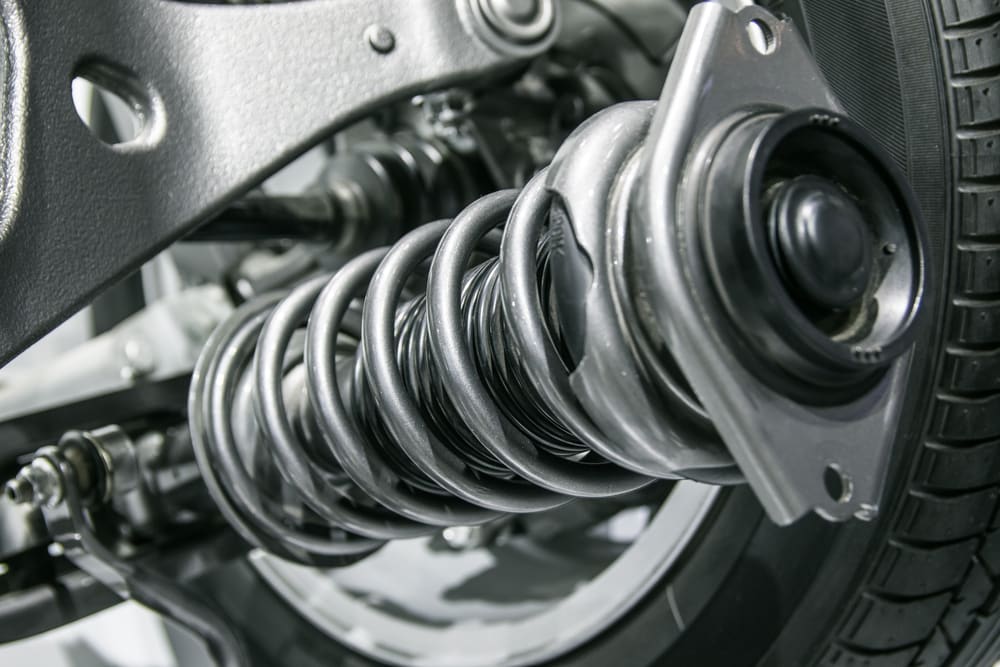

Modern day vehicles can come equipped with a variety of different suspension systems types. One of these kinds of suspension systems is the air bag suspension system. Air bag suspension systems have been used on luxury and SUV vehicles for many years, due to the the increased comfort and load leveling capabilities that they provide. Air spring bags serve the same purpose as conventional shock absorbers - to support the weight of the vehicle and absorb road impacts. However, they do so in a slightly different manner. Air spring bag systems work by using a vehicle mounted air compressor to pump air into suspension air bags. The system is monitored and pressurized or depressurized according to what setting is chosen by the driver, or the conditions detected by the computer or regulated by a valve.
Because the air spring bags and the pressurized air inside of them are what support the weight of the vehicle, if there is any problem with the bags or system, the handling and ride characteristics of the vehicle can be greatly affected. Usually, when air spring bags fail, the vehicle will produce a few symptoms that can alert the driver that there is a problem that should be serviced.
1. A bouncy ride
One of the most noticeable signs that there may be a problem with the air spring bags is a bouncy ride. The air springs are designed to absorb the movement and force of road bumps, so all of the movement will transfer directly to the vehicle if they fail. A vehicle with a bouncy ride will not only be more difficult to operate, but it will also not be as comfortable for the passengers.
2. Suspension sagging
Another symptom of a possible problem with an air spring bag is the suspension sagging. Suspension sagging occurs when one or more of the air spring bags is damaged or worn. This will cause the corner or corners of the vehicle to sag or sit lower than the others where a problem with an air spring has occurred. In more serious cases, such as with complete air spring bag failure, the suspension can sag to the point of interfering with the steering and forward movement of the vehicle and may render the vehicle undrivable.
3. Bottoming out
The air spring bags are what support the vehicle and absorb road shocks and movements. When the air bag springs fail, road shocks and movement are transferred directly through the suspension uncushioned, which can cause the suspension to bottom out. A bottoming out suspension is not only a safety hazard, as the steering and stability of the vehicle is compromised, but it can also cause damage to other suspension components due to the increased stress placed on the suspension by failed springs.
Because air spring bags support the weight of the vehicle and affects its handling and ride characteristics, it is important to maintain their proper functionality at all times. Any problems with air bag springs can quickly translate to problems with the ride, comfort, and drivability of the vehicle. This will take away from the overall driving experience and may even render the vehicle undriveable. If you suspect that you may be having a problem with one of your air bag springs, or perhaps the air spring suspension system, have the suspension system diagnosed by a professional technician, such as one from YourMechanic. They will be able to determine if the car needs an air bag spring replacement, or perhaps another issue addressed.



